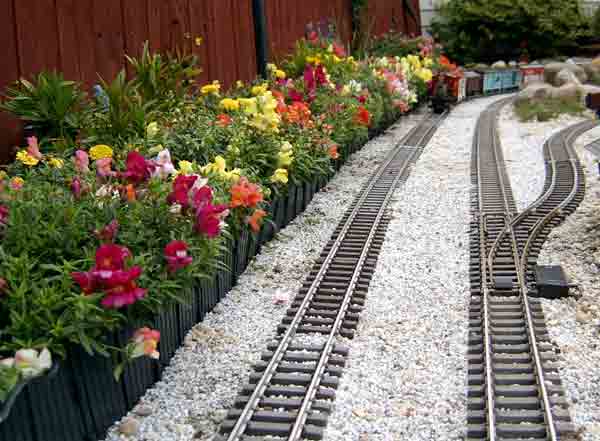
1. A spectacular display of annual flowers edges the mainline of Ned and Phyllis Ruetz’s Rock Canyon Garden Railroad in Michigan. Don Parker 2. White sweet alyssum blooms profusely on the right of a clump of blue lobelia on Tom Speer’s Hard Rock & Dynamite Railroad in Denver. Don Parker 3. What appears to be […]
Read More…
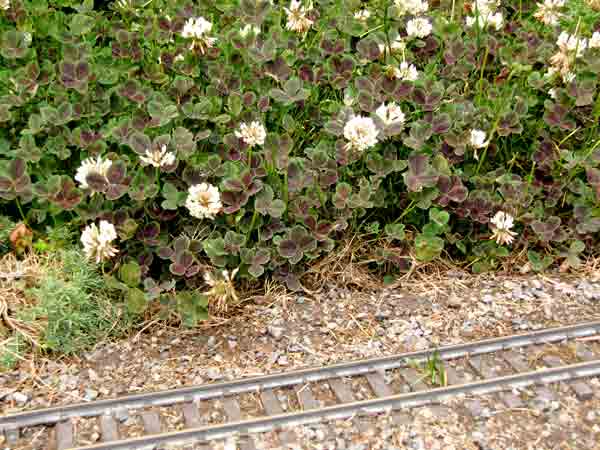
Nancy Norris Common name: Black-leaved clover Latin name: Trifolium repens ‘Atropurpureum’ Plant type: Groundcover USDA Hardiness Zones: 4-10 Cultural needs: Well drained, moist soil; sun to shade Plant size: 3-6″ high by 12″ wide White clover is native to every US State and almost all Canadian provinces. This portrait shows a selection of the common […]
Read More…
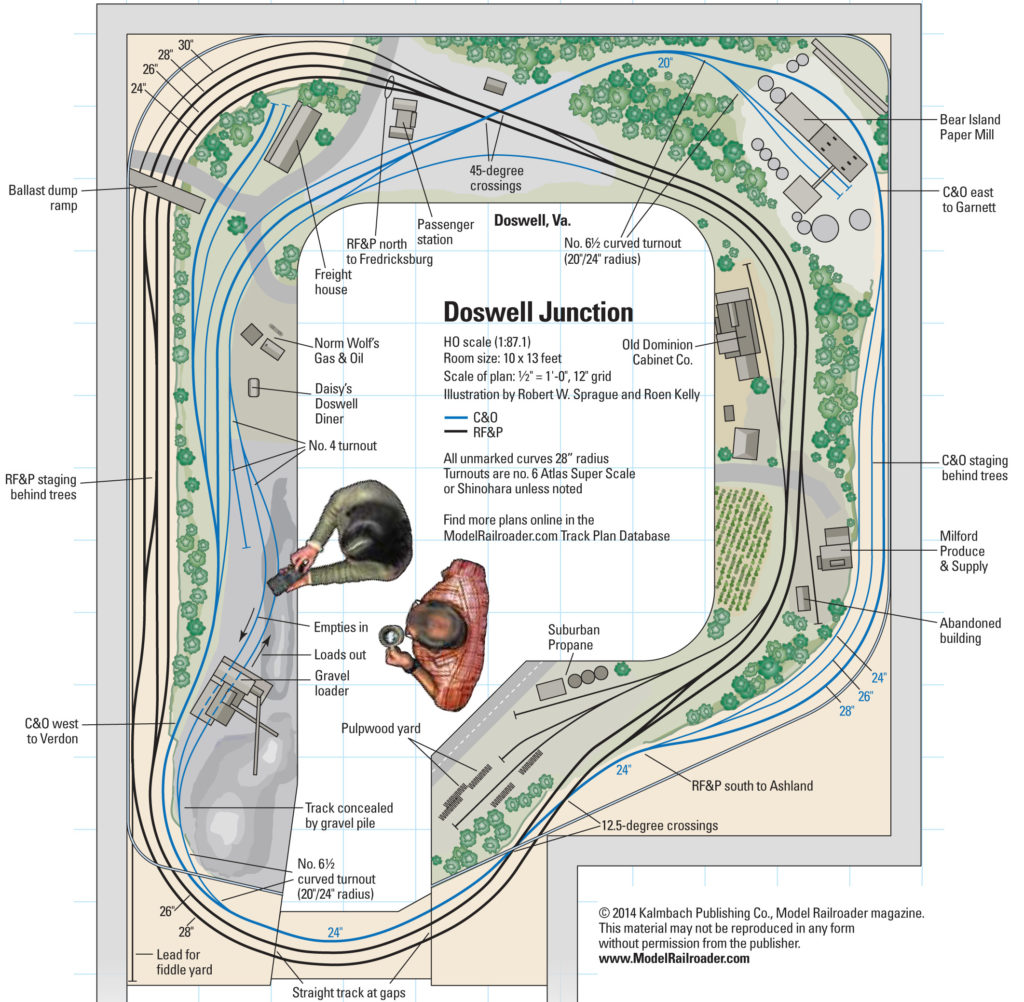
Name: Doswell Junction Layout designer: Robert W. Sprague Scale: HO (1:87.1) Room size: 10 x 13 feet Prototype: Chesapeake & Ohio and Richmond, Fredericksburg & Potomac Locale: Doswell, Va. Era: 1979 to 1980 Style: around the walls Mainline run: 33 feet (RF&P), 38 feet (C&O) Minimum radius: 24″ Minimum turnout: no. 6 Maximum grade: none […]
Read More…
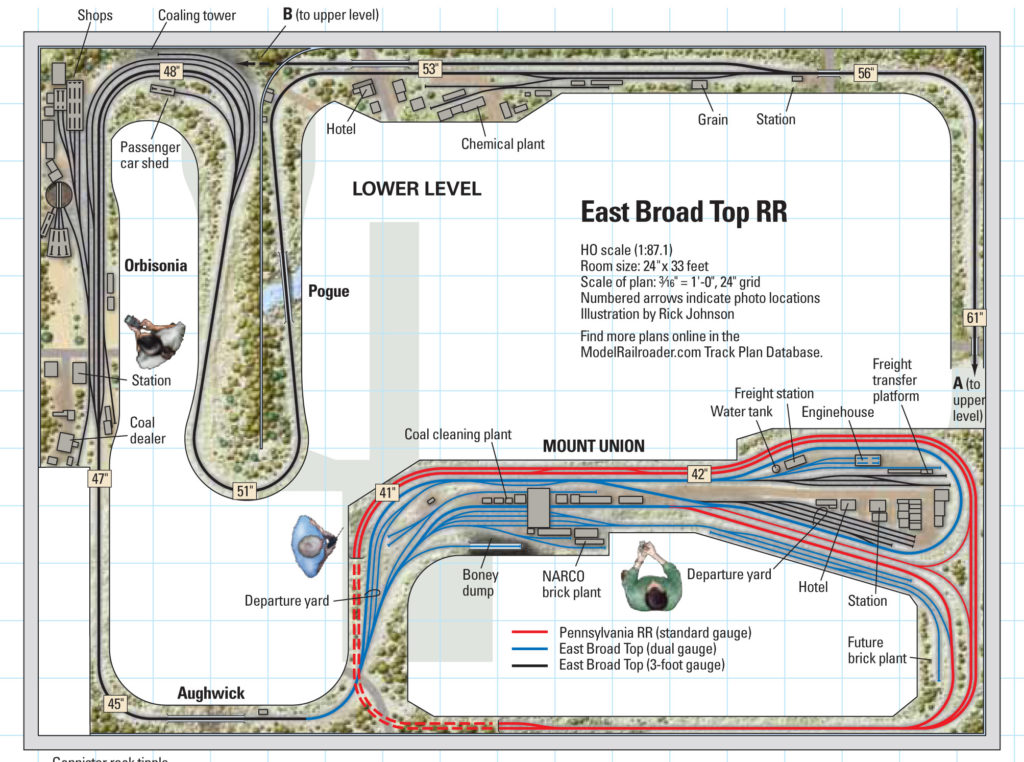
Name: East Broad Top RR Layout designer: Ron Pearson Scale: HOn3 (1:87.1, 3-foot gauge) Size: 24 x 33 feet Prototype: East Broad Top RR Locale: South-central Pennsylvania Era: late 1940s Style: multiple deck walk-in Mainline run: 170 feet Minimum radius: 22″ Minimum turnout: no. 6 Maximum grade: 3.1 percent Originally appeared in the October 2014 […]
Read More…
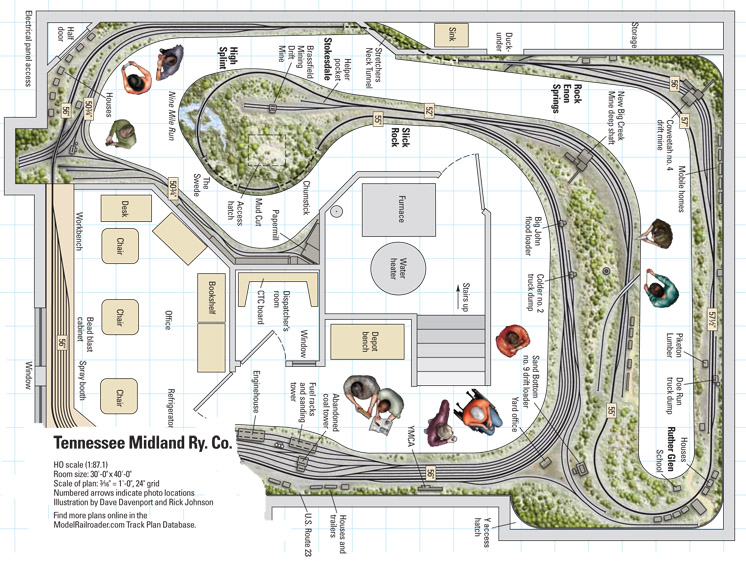
Name: Tennessee Midland Ry. Scale: HO (1:87.1) Size: 30 x 40 feet Prototype: freelanced Locale: West Virginia and Tennessee Era: mid-1980s Style: Walk around Mainline run: 150 feet Minimum radius: 40 inches Minimum turnout: no. 6 mainline, no. 4 siding Maximum grade: 1.5 percent Originally appeared in the October 2014 Model Railroader. Click on the […]
Read More…
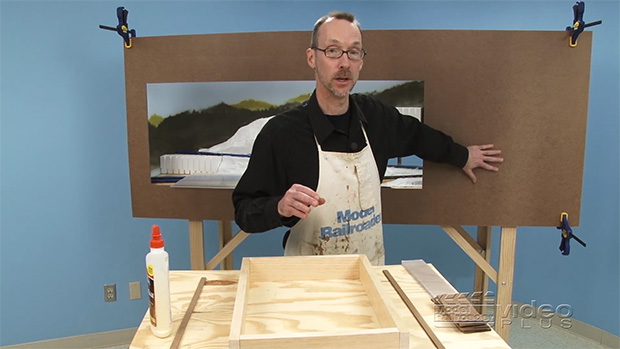
Having trouble viewing this video? Please visit our Video FAQ page Before Kent and Jenny start on the messy scenery work, David first installs the fascia and a handy display cabinet on MRVP’s On30 Olympia Logging Co. display-style layout. David gets the dust flying when he demonstrates how to make precise, clean cuts in […]
Read More…
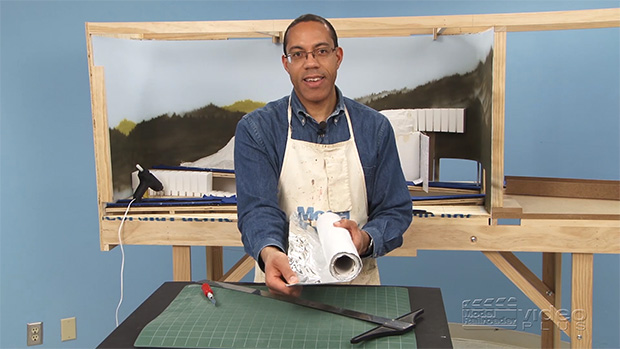
Having trouble viewing this video? Please visit our Video FAQ page MRVP’s Kent Johnson demonstrates two methods for adding a sturdy scenery hardshell over the mountainside terrain of our On30 Olympia Logging Co. display-style layout. In this video, Kent shares helpful tips and techniques for working with rolls of plaster cloth and all-new Shaper […]
Read More…
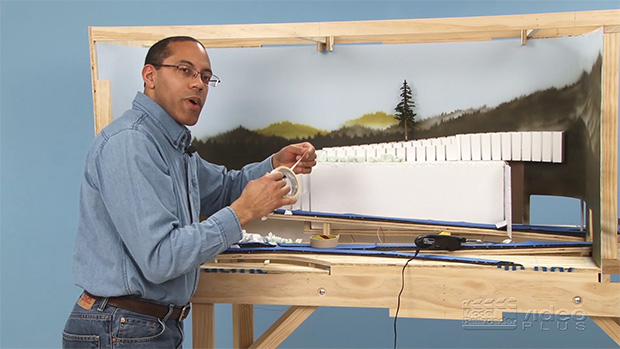
Having trouble viewing this video? Please visit our Video FAQ page In this video, Kent Johnson shares techniques he uses to transform the stacks of flexible foam blocks into a more natural, gradually sloping mountainside on MRVP’s On30 Olympia Logging Co. display-style layout. You’ll see how to work with a handy hot wire cutting […]
Read More…
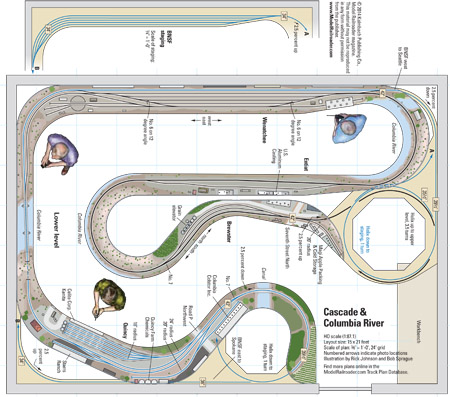
Name: Cascade & Columbia River RR Layout designer: Bob Sprague Scale: HO (1:87.1) Size: 15′-0″ x 21′-0″ Prototype: Cascade & Columbia River RR Locale: Washington state Era: Present day Style: walkaround Minimum radius: 27.5″ (main), 18″ (industrial) Minimum turnout: no. 6 Maximum grade: 2.5 percent Originally appeared in the August 2014 Model Railroader. Click on […]
Read More…
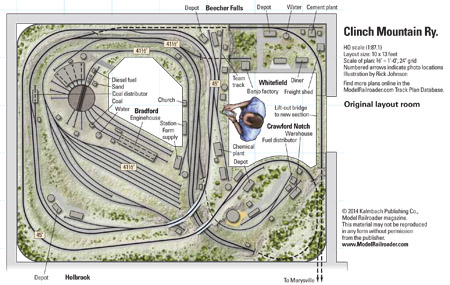
Name: Clinch Mountain Ry. Layout designer: Dave MacPherson Scale: HO (1:87.1) Size: 10 x 13 plus 10 x 20 feet Theme: Freelanced bridge route Locale: New England Era: 1952-1963 Style: walk-in Mainline run: 110 feet Minimum radius: 26″ (main), 18″ (industries) Minimum turnout: no. 6 (main), no. 4 (yards) Maximum grade: 3 percent Originally appeared […]
Read More…
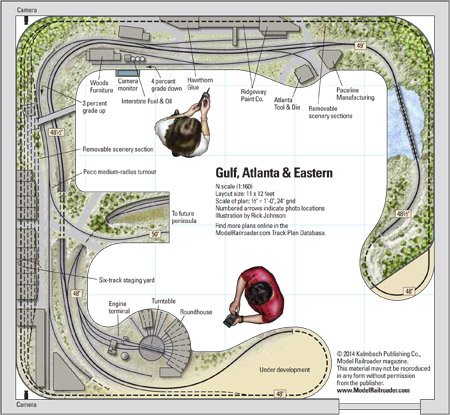
Name: Gulf, Atlanta & Eastern Layout designer: Alastair Reynolds Scale: N (1:160) Size: 11 x 12 feet Prototype: freelanced Locale: Georgia Era: steam-to-diesel transition Style: walk-in Mainline run: 72 feet Minimum radius: 11″ (hidden), 15″ (visible) Minimum turnout: no. 6 Maximum grade: 4 percent (2 percent on main line) Originally appeared in the September 2014 […]
Read More…

The September 2014 issue’s Collectible Classic discusses this interesting boxcar. Joe Algozzini provides detailed information about the variations of this car. […]
Read More…












